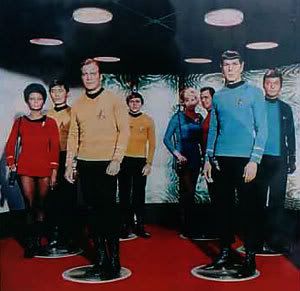
AUSTRALIAN physicists have discovered a method that could see atoms being teleported between Sydney and Perth and pave the way for possible Star Trek-like travel in the future.
The method involves cooling down a group of atoms and shooting lasers at them, making them "appear to disappear" before using transporting them along optic fibres at light speed to another location where they can be reconstructed.
The "simple" way of transporting atoms was developed by physicists Murray Olsen, Ashton Bradley, Simon Haine of the Australian Research Council Centre for Quantum-Atom Optics, and and Joseph Hope of ANU.
Dr Olsen told NEWS.com.au the method was very much like the Star Trek characters' favourite way to get back onto the ship.
The atoms are cooled to almost absolute zero, or -273C. At a billionth of a degree above this temperature, a quirk of physics makes all the atoms start behaving in the same way. Then the scientists zap them with two lasers.
“If you cool these atoms down enough ... in a condensate, they all enter the same quantum state,” Dr Olsen said.
“When a few thousand atoms are overlapping (and you hit them with the laser beams)… they basically disappear.
“We can use an optic fibre (to transport the signal at the speed of light) into a second condensate, which could be in another room, or another building, or another state.
“We’ve got the coldest thing in the universe and the fastest speed in the universe.”
Experiments
He said the method could be being used in laboratories in the next four years, but didn't expect he would ever see humans teleported.
Dr Haine said the team’s method was a lot simpler than previous theories.
Dr Haine also said their method would reconstruct the atoms better once transported, compared to the “entanglement” theory.
“As our scheme doesn’t rely on the quality of the entanglement, it may be possible to achieve more accurate teleportation via this method,” Dr Haine said.
Another scientist at ANU, Dr John Close, intends to implement the experiments over the coming years












No comments:
Post a Comment